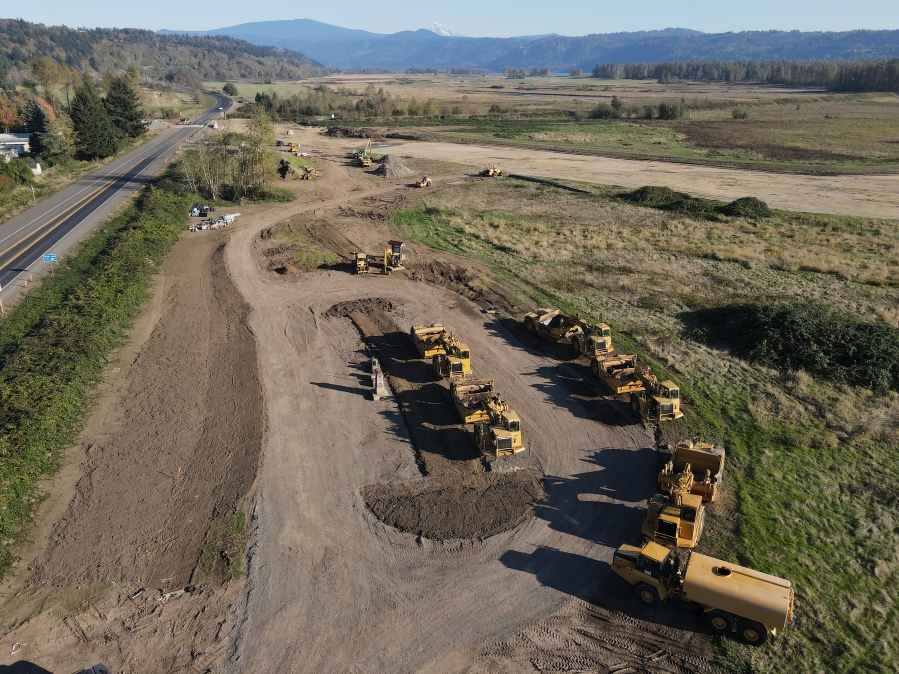2020 has been a big year for the massive Steigerwald Reconnection Project happening at the national Steigerwald Lake wildlife refuge located on the edge of Washougal.
“I would say we had a successful, productive year,” said Chris Collins, a principal restoration ecologist for the Portland-based Lower Columbia Estuary Partnership, which is working with the United States Fish and Wildlife Service (USFWS) and the Port of Camas-Washougal to reconfigure the existing Columbia River levee system to reduce flood risk, reconnect 965 acres of Columbia River floodplain at the refuge and increase recreation opportunities.
Several of the project’s major tasks — raising Highway 14 to a level matching the Columbia River’s 500-year flood level, realigning a portion of Gibbons Creek and building the foundations for two setback levees — wrapped up in late October.
“We’re on schedule. We’re within our budget,” Collins said. “The critical tasks that we really needed to accomplish this year, we hit those within the time frame. I think we’re well positioned to have a successful year next year and to wrap things up in early 2022.”
Collins said the project will take on “a very different” look in 2021.
“The nature of the work will change quite a bit,” he said.
2021 will be “primarily about two things,” Collins said: completing the earth work required to build the setback levees and finishing the trail system.





